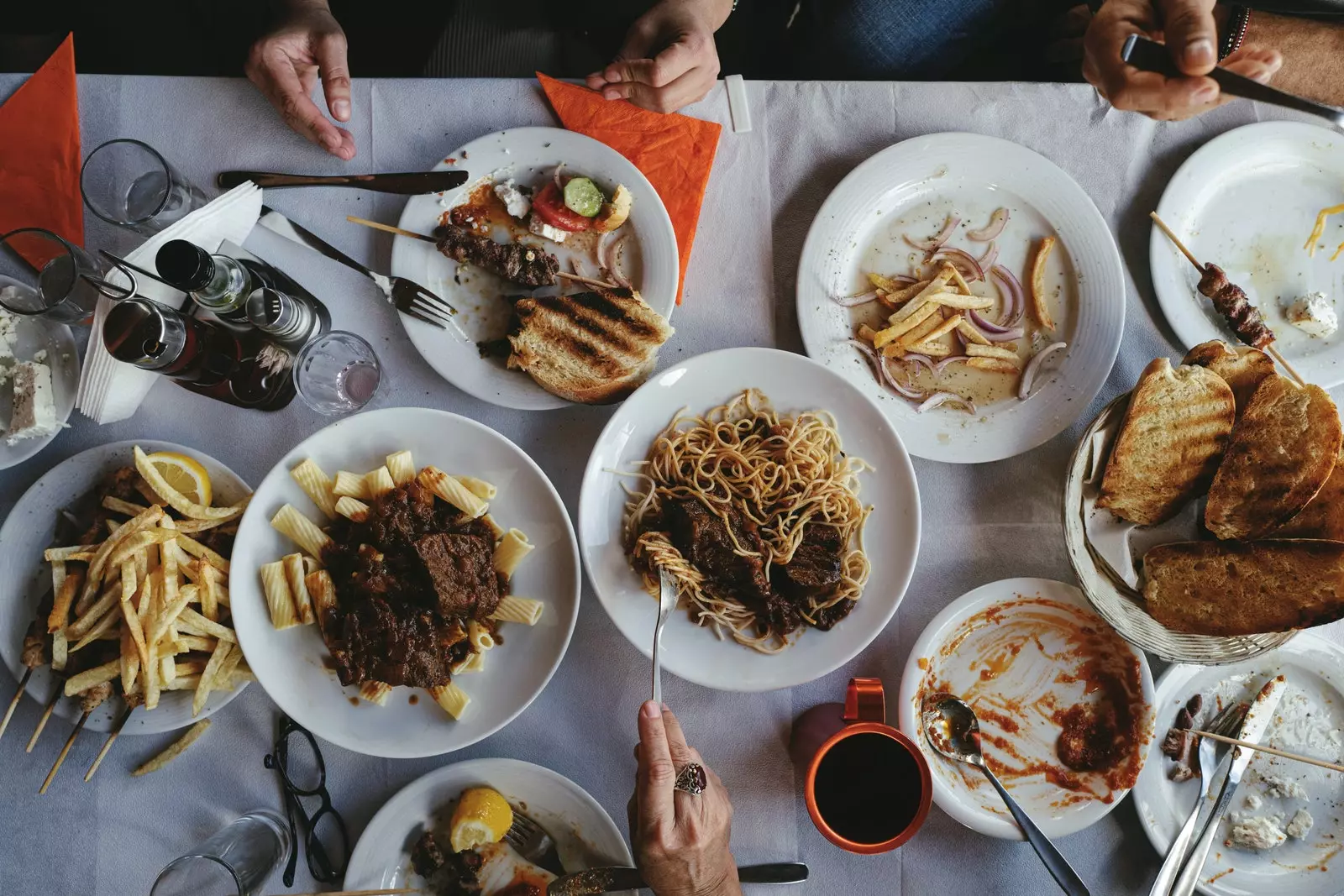
Corfu
What makes unique greek gastronomy : the product, the ancestral recipes, the philosophy around them, the love with which they are made? Since man is a man, in Greece they have been very clear about the importance of food. In the fourth century BC, Plato already recommended that young people eat a balanced diet that would include bread, olives, olive oil, cheese , bulbs, fruits and vegetables. Does it sound familiar to you?
They are, indeed, the pillars of the Mediterranean diet . And there are things that never change. That's why, Christos Fotos, chef at Jul's restaurant in Ibiza , he is determined to show us that, despite globalization, Greek gastronomy has its foundations firmly rooted in ancestral recipes and, above all, in excellent raw materials. And for this he has organized us a gastronomic tour of the flavors of his country that will take us to the Pelion Peninsula, Corfu, his birthplace, and Athens.
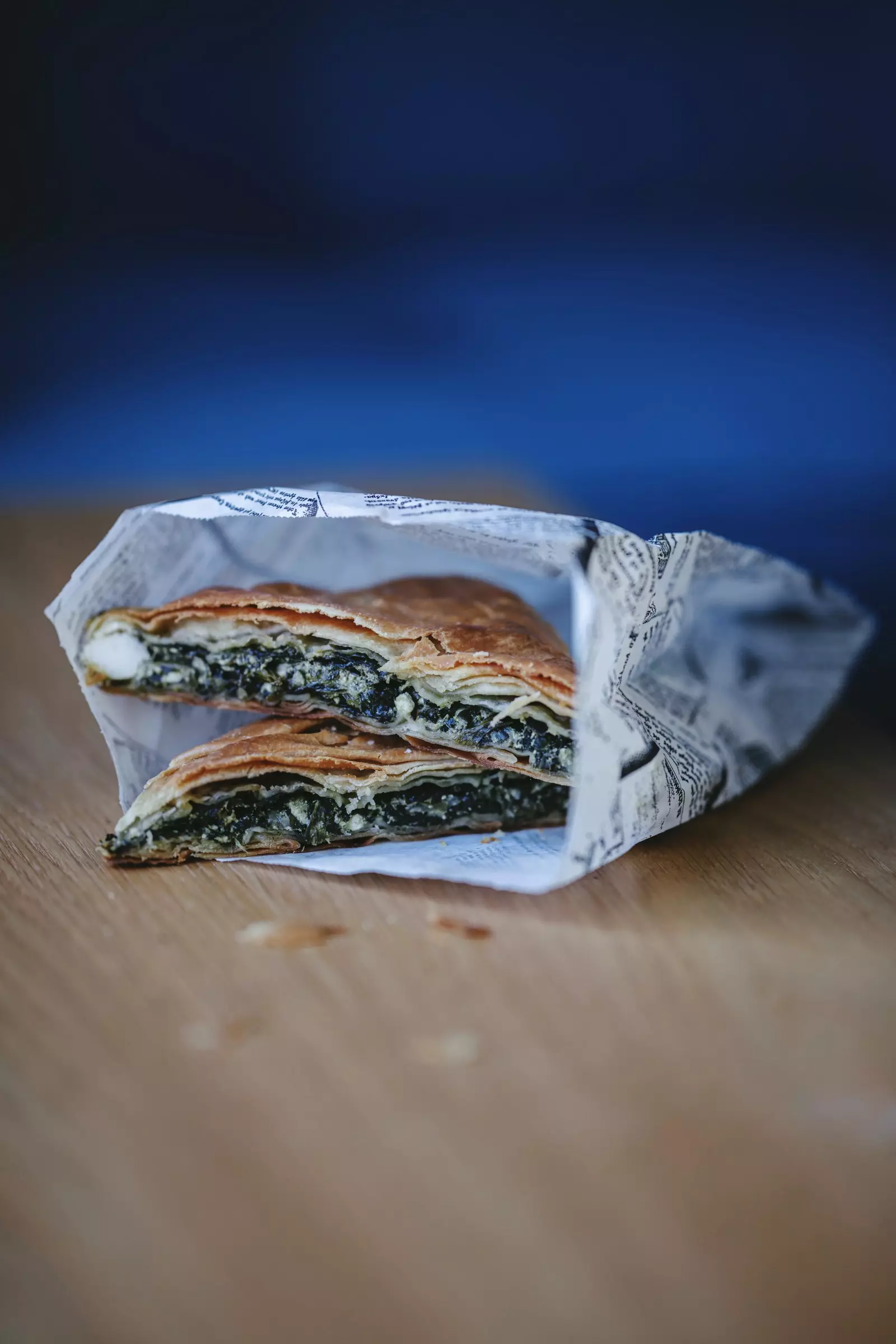
Panakopitas or spinach and feta cupcakes
Pelion Peninsula, daily bread
Our first stop is at the city of Volos, on the Pelion peninsula , central region of Greece, and we go straight, without wasting a second, to join the queue that is set up daily at the door of the Papagiannopoulos patisserie, in operation since 1919, to taste the best halva (a nougat-like paste made from sesame seeds) from all over the country. Eating it freshly made, still warm, is an extra pleasure that is worth every minute of waiting.
situated between the Aegean Sea and the Pagasetic Gulf , and crowned by the mythological legends of Mount Pelion (also called Thessaly), abode of the centaurs, this is a rich forest region –the wood used to build the ship with which the Argonauts set out to search for the Golden Fleece was extracted from them– and magical villages that keep a past of opulence in the stone of their houses.
With its impressive panoramic views, Makrinitsa is the most visited of the twenty-four villages in the area , perhaps because it is the first on the winding road that runs through the peninsula, but in all of them there are restaurants where you can treat yourself to homemade Greek food.
the ubiquitous ouzo, a liqueur made from ripe grapes and anise , always arrives at the table accompanied by an assortment of small plates of appetizers to share. They are the Greek tapas, the mezzedes: tzatziki (a yogurt cream with mint, olive oil, grated cucumber and garlic), saganaki (kefalotiri cheese fried in olive oil and served with sesame seeds and honey), joriatiki salata (salad with tomato, cucumber, green pepper, onion, kalamata olives and feta cheese, olive oil, salt and oregano), melitzanosalata (a pate of roasted aubergines with smoky nuances, raw garlic, parsley, lemon juice and olive oil), Keftedes (meat balls), seasoned olives... And yogurt . The yogurt that never fails; fresh, homemade and with honey , home care.
Is region producing apples, pears and other fruits It is known for the sweetness of its preserves and jams . Also for the bread, made with sourdough. It all started in the 3rd century BC: while in other parts of the West the taste of food was not given importance, the Greeks already used about 70 different types of bread.
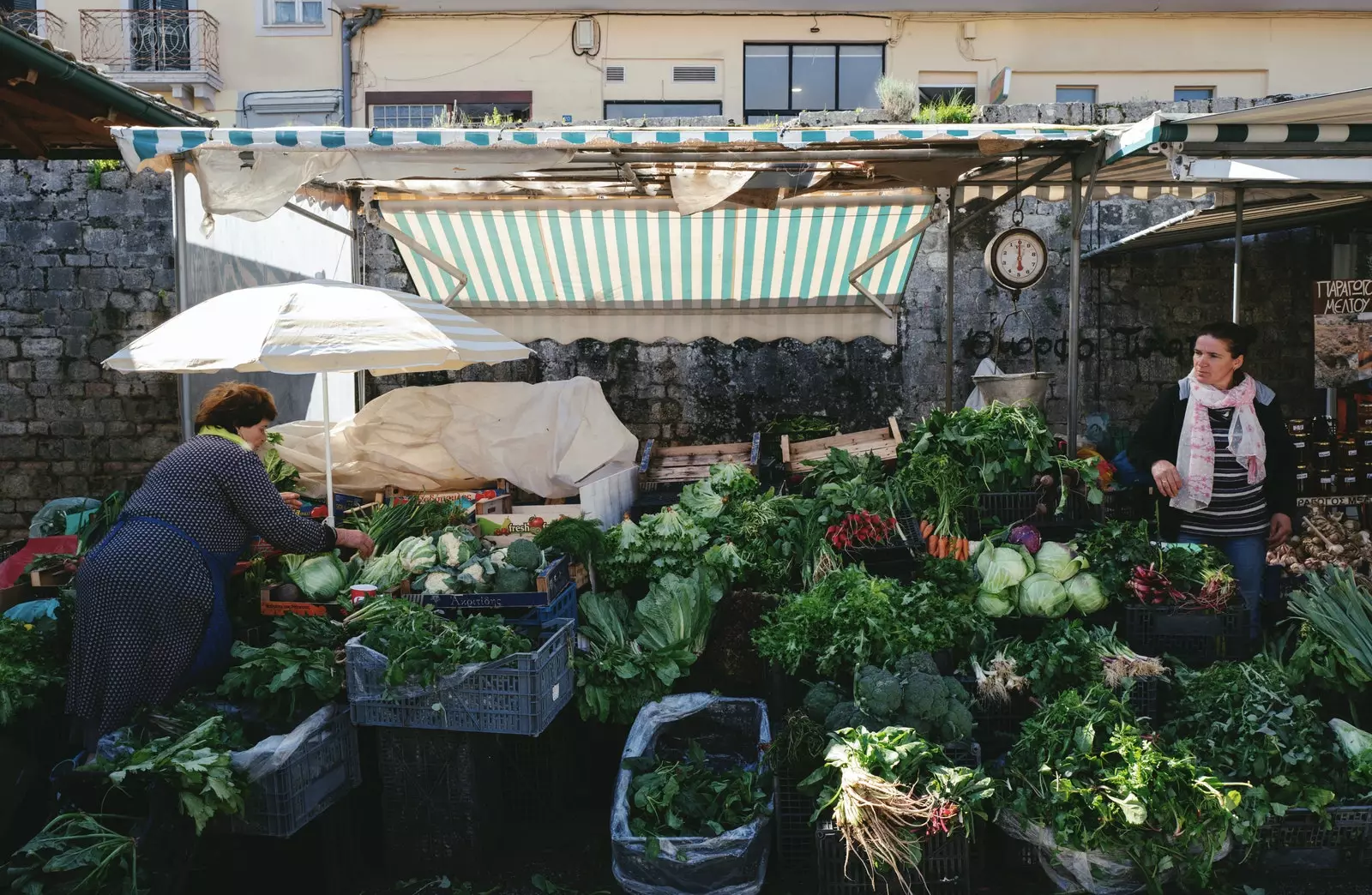
Market in Corfu
In one of the alleys of stone and flowers of the serene medieval village of Lafkos, one of the last ten traditional ovens left in the country is still in operation. Also here is your oldest coffee shop: Forlida , open since 1785 and today run by the seventh generation of the Forlidas family.
In the southwestern tip of the Pelion Peninsula , covered with olive groves, a winding path leads to the small Katigiorgis cove . There, with the tables directly on the sand of the beach, an** unassuming beach bar** will make you check the freshness of the gulf seafood . Every morning, its owner, the same one who will then cook what you put in your mouth, fishes for his guests octopus, squid, sea urchins, sea bass... The views of the Aegean and the island of Skiathos, the westernmost of the Sporades archipelago, they create the rest of the magic.
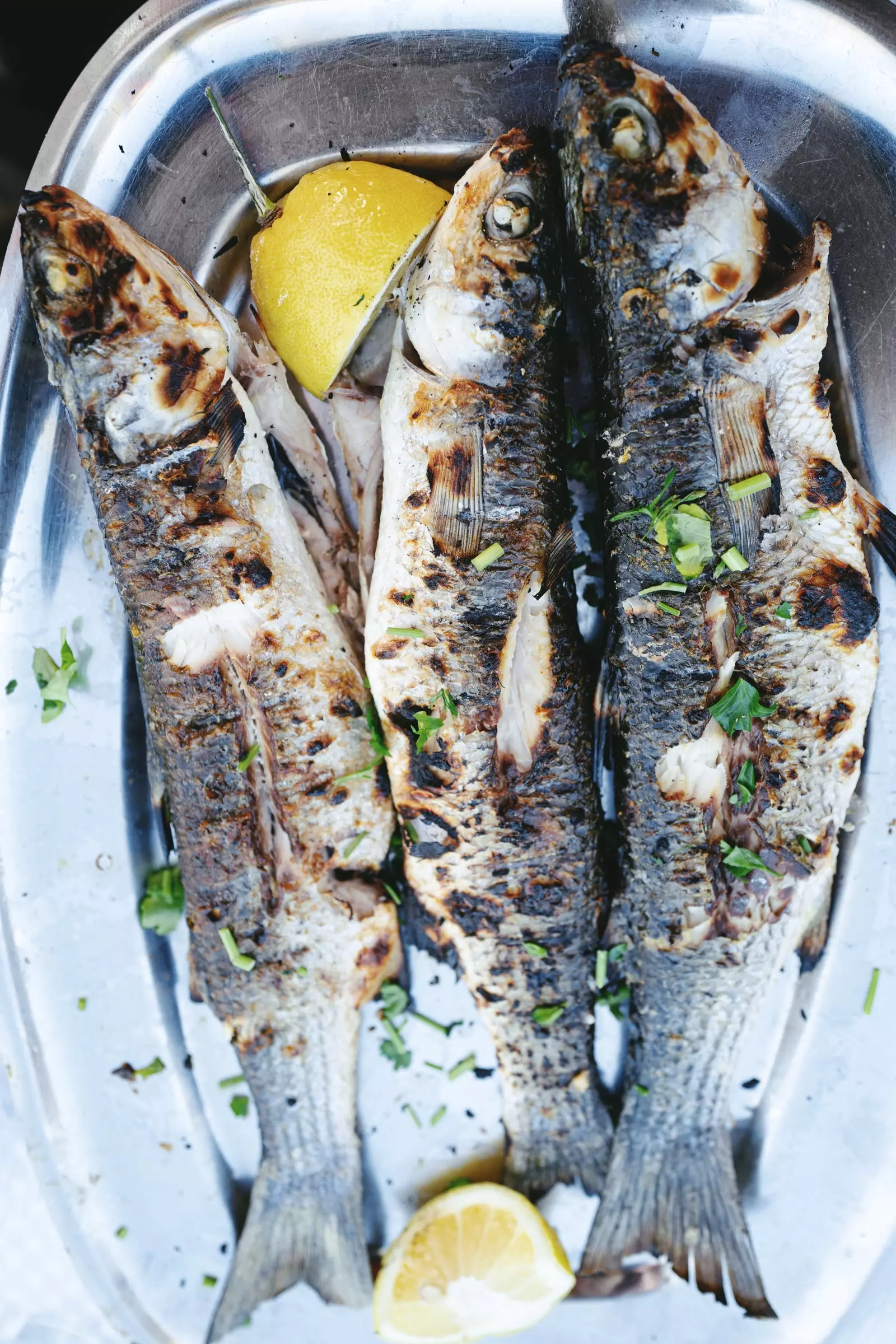
Grilled sea bass at Flisvos taverna in Katigiogis cove
Corfu, where Greece eats Italian
With a coastline starring beaches and coves incredible bathed in turquoise waters, the geography of Corfu is reminiscent of that of the Balearic Islands. maybe because of this chef Christos, a native of Corfu , chose Ibiza to settle down. Popular summer destination, this was for decades, until Mykonos stole his attention , the most famous and visited island in Greece. But, wrapped in its unmistakable aura of aristocracy, it still preserves an agrarian and artisanal world that refuses to disappear in the villages of the mountainous interior.
Like Perithia, whose strategic construction in the highest part of Corfu, Pantokrator, to hide from pirates, is believed to have been before the fourteenth century. After years of neglect, the village slowly began to revive a decade ago thanks to a series of ecotourism initiatives. From here, from Pantokrator come honey, yogurt and lamb that the chef associates with his childhood.
Corfu's gastronomic influences are as varied and scattered as the tastes of those who took a fancy to it:** it was part of the Byzantine Empire for centuries**, besieged by the Ottomans and ruled by the Venetians, French and English until, in 1864, became part of Greece . But the most everyday dishes clearly show that Italy is very present . It is noted, for example, in the pastitsio (macaroni au gratin with meat, cheese and bechamel), in the pastitsada (the traditional Sunday dinner) or even in the moussaka , a classic recipe from the Greek cookbook that, as Christos tells us, is still a version of Italian lasagna.
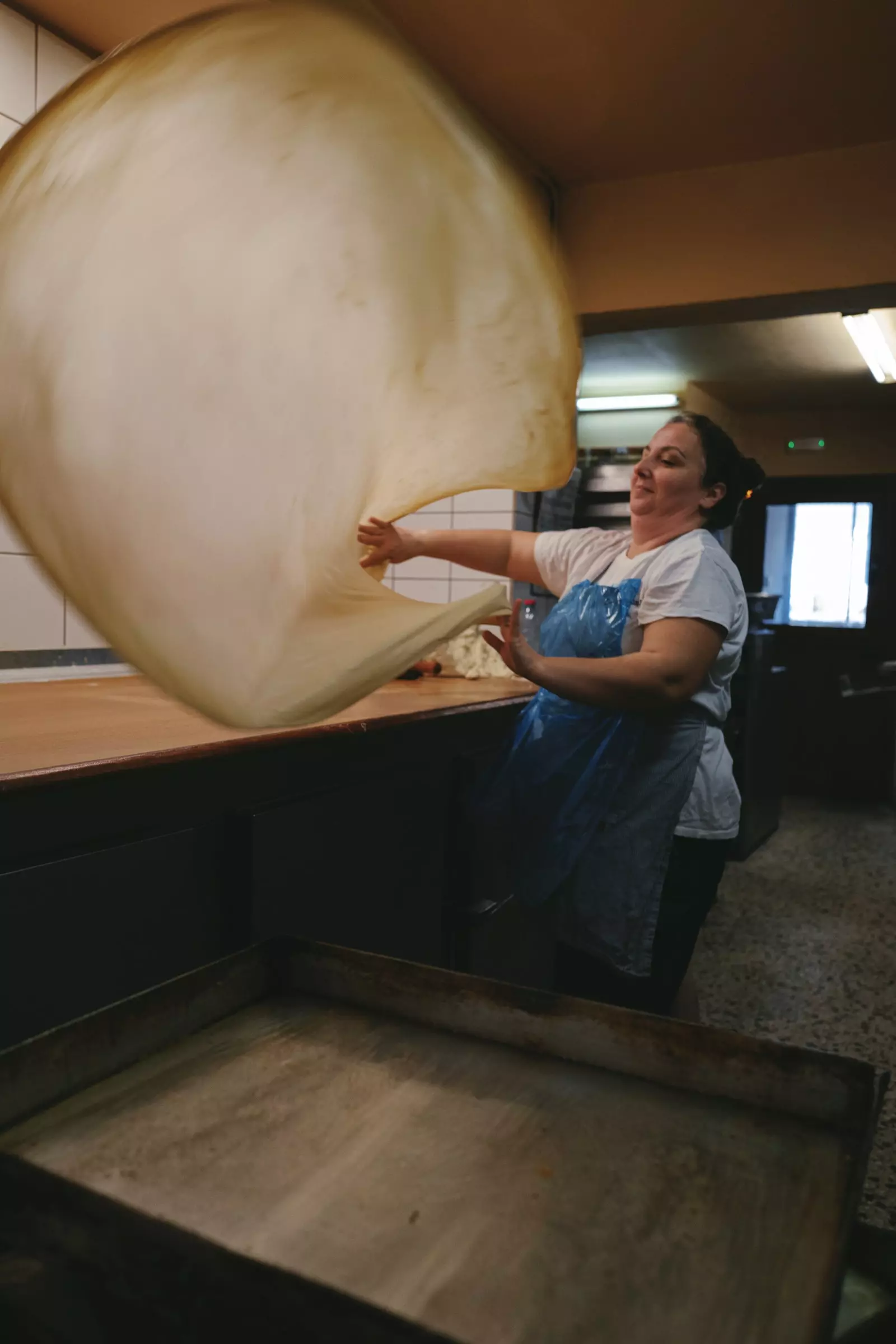
The proverbial skill of Greek pastry chefs with puff pastry.
Athens, an oriental sweet
The best place to check the influences of the cultures that Greece has fed on is Athens . Here the flavors coexist, intertwine and enrich with others of oriental tradition. Athens knows the East. It is tasted at dolmas (stuffed grape leaves), in the condiments that they use for meats, in spices , on the devotion to nuts , figs, dried apricots... and, of course, it shows in the cake shop.
Atenas tastes of the Orient and, in addition,** it tastes sweet, like phyllo dough and puff pastry**. Again, the ancient Greeks were the smartest and came up with the idea of making puff pastry with flour, salt, water and oil. Later, in the 16th century, the Ottomans refined the technique by substituting butter for oil, and this is how today the spanakopita (spinach pie, feta cheese, onion, eggs and spices, which in its best version includes wild herbs collected in the mountains), the bougatsa (phyllo dough layer cake filled with pastry cream, cheese or meat) and the popular and addictive baklavas , puff pastry, dried fruit and honey cakes that are considered both a Turkish and Greek specialty. To accompany this puff pastry, a good coffee is essential.
Fortunately, Athens is a coffee city . Have nearly twenty specialty coffee shops and award-winning baristas internationally, such as Tania Konstantinova, who uses grains from the most remote corners of the planet in her Dyo Goulies & Dyo Boukies , which means “Two sips and two bites”.
With dessert and coffee the after-meal table officially begins, but about that, about the art of extending it until dinner time, it is not necessary for the great philosophers to enlighten us.
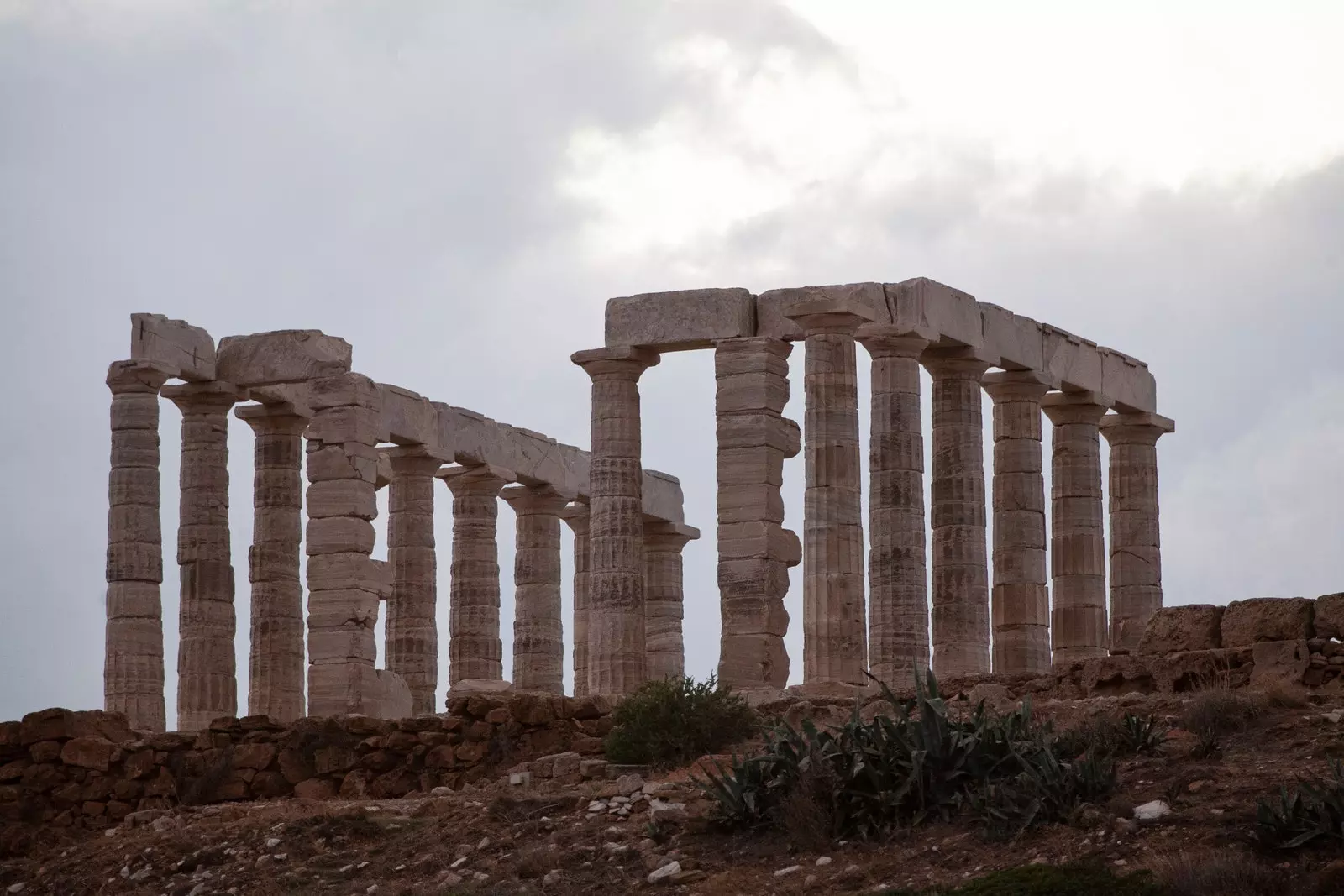
Temple of Poseidon, in Athens
This report was published in the number 141 of the Condé Nast Traveler Magazine (September) . Subscribe to the printed edition (11 printed issues and a digital version for €24.75, by calling 902 53 55 57 or from our website).*
